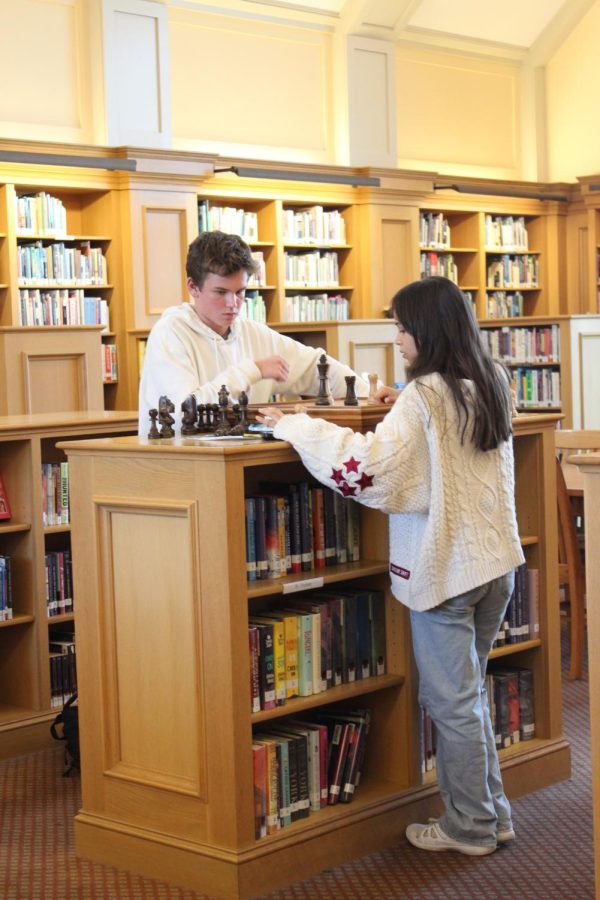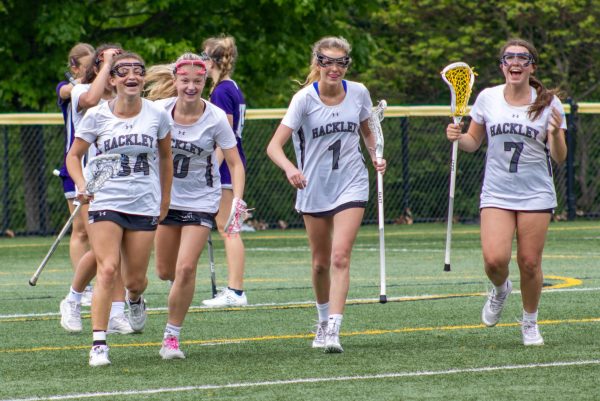Students React to the Revised Dress Code
A new standard of dress has been implemented at Hackley this fall. Is it a step in the right direction, or a trivial difference?
Albeit subtle, revisions to the dress code have been made for the 22-23 school year. Hackley has made an attempt to implement both professionalism and comfort into the dress code by removing and adding certain rules. These rules are slightly less confining for students but still highlight the sexist idea that women should “cover up” their bodies.
For the past few years, teachers have been lenient with dress code violations due to the stress of the Covid pandemic. Although not allowed, many students began to wear slides, crocs, sandals, flip-flops, and slippers as they are a comfortable and easy option for footwear. People also began to wear blue jeans, sweatpants, spaghetti strap shirts, leggings, and athletic clothing. In the revised dress code it is made evident that these types of attire are prohibited at Hackley.
Even though ripped denim is still prohibited at Hackley, one of the most significant revisions of the dress code was the ability to wear denim of all colors. Prior to this change, students were only permitted to wear black or white denim which was an annoyance to the majority of students. One senior, Gabriella Parasnis, said that she appreciated this revision, “I also know that the dress code wasn’t really enforced last year so students were wearing denim, either way, I’m glad they did. It makes it a little easier in the morning, at least for me because I am a denim person.”
Another revision that students and teachers were happy to hear was the authorization of tank tops and t-shirts. This change affected students of all identities, as many students disliked having to wear a collared shirt whereas others disliked the inability to wear tank tops. For years, students were penalized for wearing what made them comfortable in their own bodies, for unjust reasons. If students are allowed to wear tank tops, they should be able to wear spaghetti straps as they are practically the same. In the early fall and spring, temperatures rise and students want to dress comfortably in order to focus on school. It is unfair to require students to “cover up” in extreme heat, especially with the lack of air conditioning in the Upper School. One of the most frequent questions about the previous dress code was, “What is so distracting about my shoulders?” Even with the revised dress code, this is still a valid question.
Additionally, many students were disappointed to hear that athletic leggings are still prohibited, even with the revision to the dress code. In the visual guide for the Hackley Standard of Dress, it mentions that certain pants are permitted for lower schoolers only and provides a link for an example. At the top of the page in big, bold letters, it reads “leggings.” Why are lower school students permitted to wear leggings, but middle and upper school students are not? There are hardly any differences between these students, apart from their bodies. Through adolescence, people’s bodies change, and prohibiting leggings creates an awkward stigma around that. There is nothing wrong with a student wearing leggings unless one makes it a problem by deeming it ‘inappropriate’, which in the process, sexualizes students who are minors.
Tenth-grade student, Megan Hopkins said, “I feel as if a lot of the restrictions to the dress code are directed at the girls at Hackley. The crop tops, the spaghetti straps, and leggings are all examples of clothing we regularly wear that are not distracting, provocative, or inappropriate, but we are made to feel that way. It’s demeaning and often humiliating to get dress coded for simply having “too much” skin showing. We should not have to cover ourselves up to feel respected by our peers and superiors.”
Others disagree and believe that the dress code is not targeted at girls in the Hackley community: “Personally, I don’t think it is very sexist. I think it is better than in previous years,” said Sophie Ryan ‘24, “I just hope that they don’t just suddenly change their mind.”
Others reacted more positively about the revised dress code, 10th-grade class president Rafa Castro said, “I think that there were a lot of steps towards a more progressive & inclusive dress code and I really liked the way it was phrased, especially because it didn’t single any one item of clothing out.”
Others say that the dress code really didn’t affect them at all. For example, Jiya Dhakad ‘26 was not affected by this revision, “Personally, it doesn’t change what I wear… but I understand why like a lot of people are mad about it.”
I firmly believe that the students of Hackley come to school in order to learn, not to be punished and ridiculed for their choice of style and for prioritizing their comfort over appearance. Although slightly improved, the dress code is confining and unfair to the girls of the Hackley community and should be adjusted to make sure students of all genders are comfortable at school.











